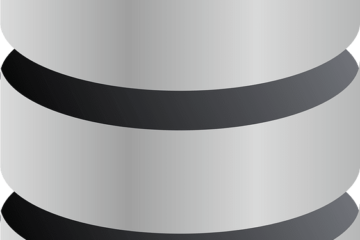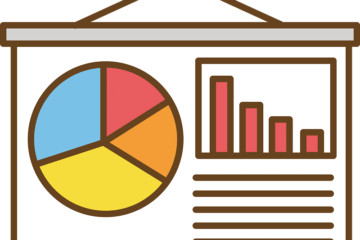A Comprehensive Guide to Data Mining Tools: Exploring Pros, Cons, and Industrial Use-Cases
Introduction:
Data mining has become a crucial process in extracting valuable insights and patterns from large datasets. With the increasing availability of data, organizations are leveraging advanced data mining tools to uncover hidden trends, make informed decisions, and gain a competitive edge. In this article, we will explore and compare different data mining tools, highlighting their pros, cons, and industrial use-cases. Let’s dive in!

1. RapidMiner:
RapidMiner is a powerful and user-friendly data mining tool that offers a visual workflow environment for building and deploying predictive models. It provides a wide range of data preparation, modeling, evaluation, and deployment functionalities.
Pros:
– Intuitive and visually appealing interface for ease of use.
– Extensive library of pre-built operators and templates.
– Support for a wide range of data sources and formats.
– Advanced analytics capabilities, including text mining and deep learning.
– Strong community support and active user community.
Cons:
– Steeper learning curve for complex data mining tasks.
– Limited scalability for large datasets.
– Limited customization options compared to some other tools.
– Requires additional extensions for some advanced functionalities.
– Licensing costs can be relatively high for enterprise-level features.
Industrial Use-case: RapidMiner is commonly used in industries such as finance, healthcare, and marketing, where predictive modeling, data visualization, and automation are crucial.
2. KNIME:
KNIME is an open-source data mining tool that offers a modular and visual workflow environment. It allows users to create complex data mining workflows by connecting pre-built components called nodes.
Pros:
– Open-source platform with a strong and supportive community.
– Flexible and modular architecture for building custom workflows.
– Support for a wide range of data sources and formats.
– Integration with popular programming languages, such as R and Python.
– Extensive collection of pre-built nodes and plugins.
Cons:
– Requires some programming skills for advanced customization.
– Limited advanced analytics capabilities compared to specialized tools.
– Relatively steeper learning curve for beginners.
– Performance limitations for very large datasets.
– Documentation can be overwhelming for new users.
Industrial Use-case: KNIME is commonly used in industries such as pharmaceuticals, manufacturing, and finance, where flexibility, customizability, and integration with programming languages are crucial.
3. SAS Enterprise Miner:
SAS Enterprise Miner is a comprehensive data mining and predictive analytics tool provided by SAS. It offers a range of advanced analytics capabilities for building complex models and performing in-depth analyses.
Pros:
– Advanced analytics capabilities, including data exploration and predictive modeling.
– Integration with other SAS products and solutions.
– Scalable architecture for handling large datasets.
– Robust data visualization and reporting features.
– Extensive support for data preparation and transformation.
Cons:
– Higher licensing costs for enterprise-level features.
– Steeper learning curve for complex functionalities.
– Relatively complex setup and administration process.
– Limited customization options for visualizations.
– Requires specific knowledge of SAS programming language.
Industrial Use-case: SAS Enterprise Miner is commonly used in industries such as finance, healthcare, and telecommunications, where advanced analytics, scalability, and integration with other SAS solutions are critical.
4. Alteryx:
Alteryx is a self-service data mining and analytics platform that allows users to blend, analyze, and visualize data without extensive coding. It focuses on simplifying complex data processes and automating repetitive tasks.
Pros:
– User-friendly interface suitable for non-technical users.
– Drag-and-drop functionality for easy data manipulation.
– Integrated spatial analytics and mapping capabilities.
– Automation of data workflows and repetitive tasks.
– Integration with popular BI and visualization tools.
Cons:
– Relatively higher pricing compared to some other tools.
– Limited advanced analytics capabilities compared to specialized tools.
– Performance limitations for very large datasets.
– Limited support for custom scripting and coding.
– Steeper learning curve for advanced functionalities.
Industrial Use-case: Alteryx is commonly used in industries such as retail, marketing, and finance, where self-service analytics, data blending, and automation are crucial.
5. IBM SPSS Modeler:
IBM SPSS Modeler is a comprehensive data mining and predictive analytics tool that provides advanced analytics capabilities for building and deploying models. It offers a visual interface for data preparation, modeling, and evaluation.
Pros:
– Advanced analytics capabilities, including data exploration and predictive modeling.
– Integration with other IBM products and solutions.
– Scalable architecture for handling large datasets.
– Extensive support for data preparation and transformation.
– Robust reporting and visualization features.
Cons:
– Higher licensing costs for enterprise-level features.
– Steeper learning curve for complex functionalities.
– Limited customization options for visualizations.
– Requires specific knowledge of SPSS programming language.
– Relatively complex setup and administration process.
Industrial Use-case: IBM SPSS Modeler is commonly used in industries such as market research, finance, and healthcare, where advanced analytics, scalability, and integration with other IBM solutions are essential.
6. R Studio:
R Studio is an open-source integrated development environment (IDE) for the R programming language, widely used for statistical computing and data mining. It provides a wide range of packages and libraries for data analysis.
Pros:
– Open-source platform with a vast and active community.
– Comprehensive statistical and data mining capabilities.
– Extensive collection of packages and libraries.
– Integration with other programming languages and tools.
– Advanced visualization and reporting capabilities.
Cons:
– Steeper learning curve for beginners.
– Limited support for big data processing.
– Relatively slower performance compared to some other tools.
– Requires programming skills for customization.
– Limited support for workflow automation.
Industrial Use-case: R Studio is commonly used in industries such as healthcare, finance, and academia, where advanced statistical analysis, customization, and integration with other programming languages are critical.
7. Python Jupyter Notebook:
Python Jupyter Notebook is an open-source web application that allows users to create and share documents containing live code, visualizations, and narrative text. It provides a flexible and interactive environment for data mining and analysis.
Pros:
– Open-source platform with a large and active community.
– Versatile and flexible environment for data analysis.
– Integration with a wide range of data processing and visualization libraries.
– Support for interactive data exploration and modeling.
– Easy collaboration and sharing of analysis notebooks.
Cons:
– Steeper learning curve for beginners.
– Limited support for big data processing.
– Requires programming skills for complex analyses.
– Relatively slower performance compared to some specialized tools.
– Limited support for workflow automation.
Industrial Use-case: Python Jupyter Notebook is commonly used in industries such as research, finance, and data science, where flexibility, interactivity, and integration with various data processing libraries are crucial.
8. Apache Mahout:
Apache Mahout is an open-source machine learning and data mining library that provides scalable algorithms for big data processing. It is designed to work with Apache Hadoop and other distributed computing frameworks.
Pros:
– Open-source platform with a large and active community.
– Scalable algorithms for big data processing.
– Integration with Apache Hadoop and other distributed computing frameworks.
– Support for a wide range of machine learning tasks.
– Extensible architecture for custom algorithm development.
Cons:
– Steeper learning curve for beginners.
– Limited support for data visualization and reporting.
– Requires programming skills for customization and complex analyses.
– Relatively slower performance compared to some specialized tools.
– Limited documentation and user support.
Industrial Use-case: Apache Mahout is commonly used in industries such as e-commerce, social media, and telecommunications, where scalability, distributed computing, and big data processing are crucial.
9. Dataiku:
Dataiku is a collaborative and end-to-end data science platform that provides a unified environment for data preparation, modeling, and deployment. It offers a visual interface and supports various programming languages.
Pros:
– User-friendly interface suitable for non-technical users.
– Integrated and collaborative environment for data science projects.
– Support for a wide range of data sources and formats.
– Integration with popular programming languages and libraries.
– Advanced analytics and machine learning capabilities.
Cons:
– Higher pricing compared to some other tools.
– Limited support for distributed computing and big data processing.
– Steeper learning curve for advanced functionalities.
– Relatively slower performance for large datasets.
– Limited customization options compared to some specialized tools.
Industrial Use-case: Dataiku is commonly used in industries such as retail, finance, and healthcare, where collaborative data science, advanced analytics, and integration with programming languages are essential.
10. DataRobot:
DataRobot is an automated machine learning platform that enables users to build and deploy predictive models quickly. It leverages advanced algorithms and automation techniques to streamline the data mining process.
Pros:
– Automated machine learning capabilities for faster model building.
– Integration with popular programming languages and frameworks.
– Comprehensive model evaluation and interpretation features.
– Support for a wide range of data sources and formats.
– Scalable architecture for handling large datasets.
Cons:
– Higher pricing compared to some other tools.
– Limited customization options for advanced users.
– Requires good understanding of machine learning concepts.
– Relatively limited control over model building process.
– Steeper learning curve for beginners.
Industrial Use-case: DataRobot is commonly used in industries such as finance, insurance, and marketing, where automated machine learning, model deployment, and scalability are crucial.
Conclusion:
In this article, we explored and compared various data mining tools, analyzing their pros, cons, and industrial use-cases. Each tool has its own strengths and weaknesses, catering to specific requirements and preferences. Understanding the characteristics of these tools will help organizations and data professionals make informed decisions when selecting the most suitable data mining tool for their specific needs. Whether it’s RapidMiner for its user-friendly interface or IBM SPSS Modeler for its advanced analytics capabilities, there is a wide range of tools available to unlock the power of data mining and drive insights for business success.


